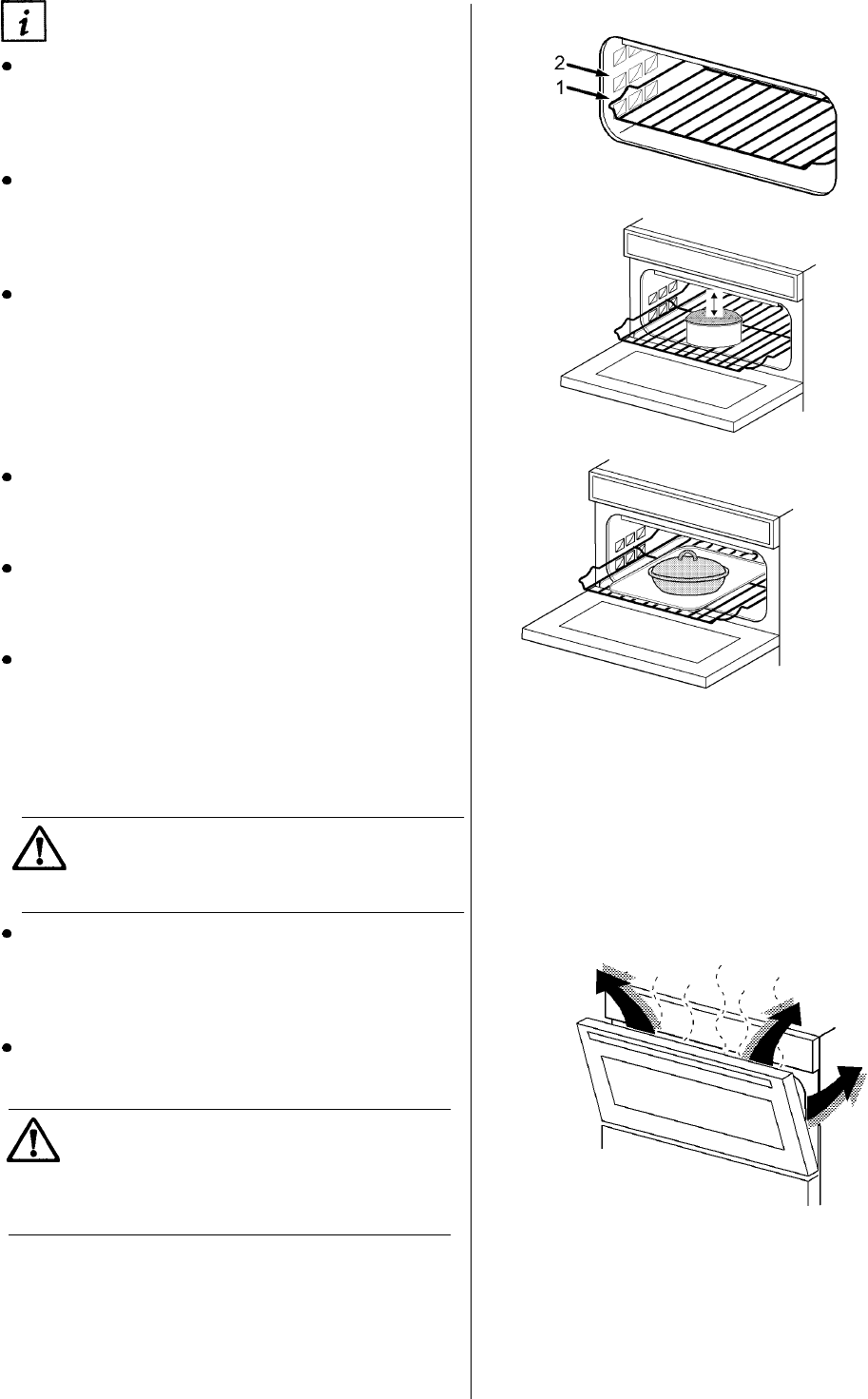
HINTS AND TIPS
All cooking should be carried out using shelf
positions one and two using a cranked shelf.
Shelf positions are counted from the bottom
upwards.
When more space is required, for example
when roasting or casseroling, a straight shelf
from the main oven may be placed on the
second oven base.
There should always be at least 2.5cm (1")
between the top of the food and the element.
This gives best cooking results and allows room
for rise in yeast mixtures, Yorkshire puddings
etc. When cooking cakes, pastry, scones,
bread etc., place the tins or baking trays
centrally below the element.
Ensure that food is placed centrally on the shelf
and there is sufficient room around the baking
tray/dish to allow for maximum circulation.
Stand dishes on suitably sized baking trays to
prevent spillage onto the oven base and to help
reduce cleaning.
The material and finish of the baking tray and
dishes will affect the degree of base
browning of the food. Enamelware, dark,
heavy or non-stick utensils increase base
browning. Shiny aluminium or polished steel
trays reflect the heat away and give less base
browning.
Because of the smaller cooking space, lower
temperatures and shorter cooking times are
sometimes required. Be guided by the
recommendations on page 18.
For economy leave the door open for the
shortest possible time, particularly when placing
food into a pre-heated oven.
DO NOT place cookware and cooking
pots with rough bases e.g. cast iron on
the oven door as damage to the glass
may occur.
15
DO NOT use the grill pan or meat tin as a
baking tray as this will increase base
browning of the food.


















